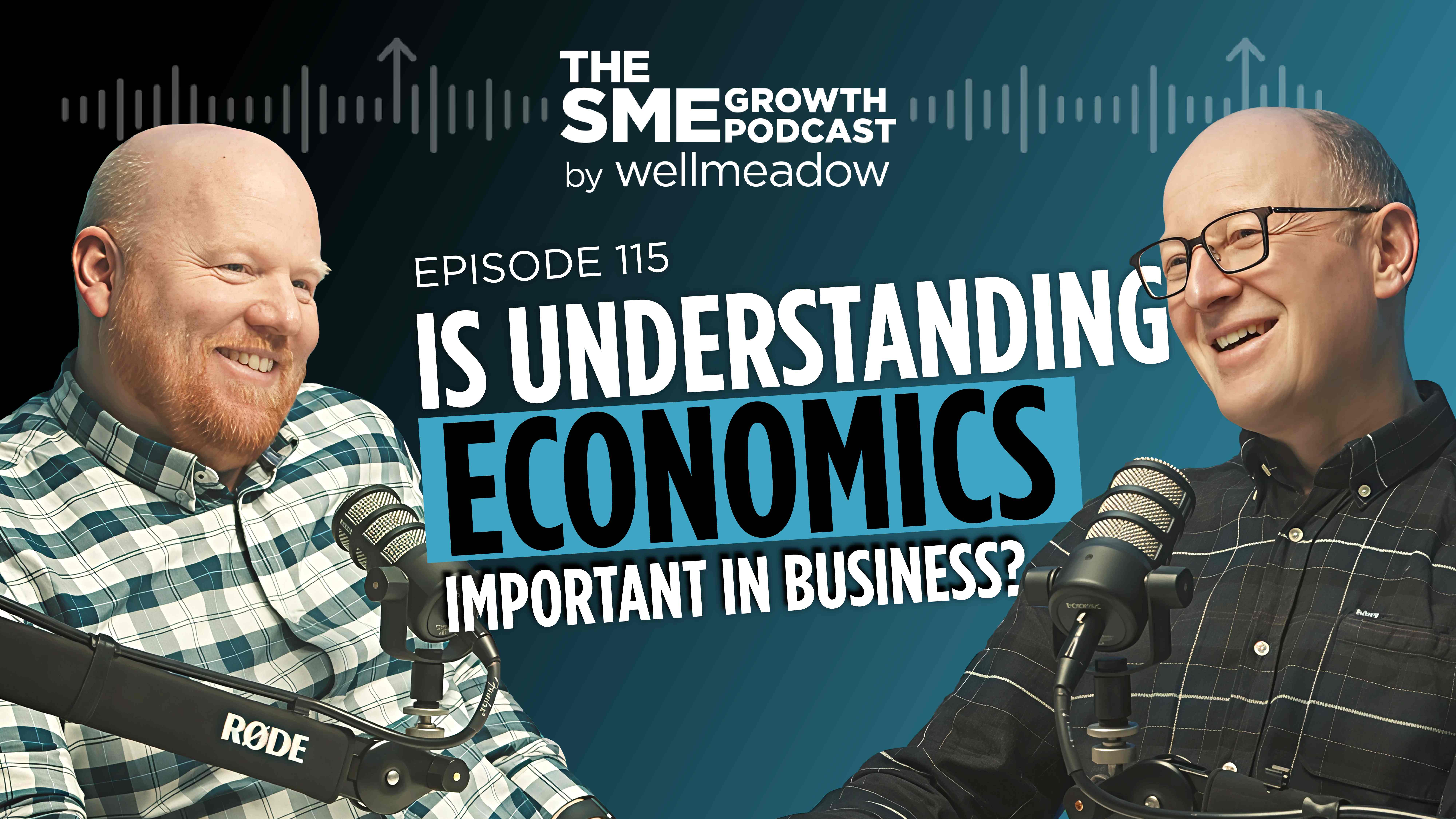In this thought-provoking episode of The SME Growth Podcast, Dave Parry and Richard Buckle reunite to explore whether understanding economic theory actually matters for small and medium-sized business owners. Against the backdrop of newly announced international tariffs and potential economic uncertainty, they examine key economic concepts like price elasticity, opportunity costs, and Keynesian theory, translating them into practical insights that business leaders can apply immediately. The hosts share personal experiences of applying economic principles in real business scenarios, including client projects where price elasticity modelling led to significant profit improvements. Rather than getting lost in macroeconomic theories, this episode focuses on actionable strategies for navigating economic challenges while continuing to deliver value to customers, providing a refreshing perspective on economics that strips away academic complexity in favor of practical business applications.
Head over to our YouTube channel and subscribe for exclusive content and a chance to see the fully clothed versions of our episodes: @TheSMEGrowthPodcast.
You can listen to the full episode here
Listen to the full episode now



Key Topics Discussed
Navigating Economic Disruptions
- Exploration of how recent tariff announcements might impact businesses that import or export goods
- Analysis of product differentiation strategies to overcome price competition during economic challenges
- Discussion of why market positioning becomes even more critical during periods of economic uncertainty
- Examination of how businesses can emphasize unique qualities (such as "Britishness") to maintain demand despite price increases
- Investigation of the perspective that economic downturns create opportunities for nimble businesses to gain market share
Understanding Price Elasticity
- Detailed breakdown of the relationship between price changes and consumer demand
- Analysis of how even modest price increases can dramatically improve profitability when understood correctly
- Examination of methods for testing and modelling price elasticity in real business environments
- Discussion of dynamic pricing strategies for time-sensitive products and services
- Consideration of how to find the optimal pricing point that maximizes overall profit rather than just sales volume
Applying Keynesian Economic Principles
- Structured approach to investing during economic slowdowns to emerge stronger when markets recover
- Importance of using quieter business periods for long-term improvement projects
- Analysis of how diverting resources to training, process improvement, and innovation can pay dividends later
- Discussion of maintaining strategic reserves to fund investment during downturns
- Examination of how companies can develop "pivot-ready" strategies for rapidly changing economic conditions
Economic Concepts with Business Applications
- Exploration of opportunity costs and recognizing the hidden price of inaction
- Analysis of the sunk cost fallacy and how it impairs business decision-making
- Discussion of productivity measurement challenges and their implications for business performance
- Consideration of employee engagement as a critical factor in organizational productivity
- Assessment of how positive reinforcement ratios affect workplace culture and performance
Quotes to Remember
"Does economics matter in business? Lots of businesses succeed during a recession, didn't they?"
"When the economy slows down, you invest... if you're not busy doing the day-to-day job, you instead divert your efforts to something else which will pay off in the future."
"Price elasticity... it really does apply. And it's really, really important as part of your pricing strategy."
"The whole point about price elasticity is what is the slope of that curve. If I put my prices up by 10%, what would demand go down by?"
"Even if the economy shrank by 10%, for most SMEs, market share is measured in fractions of 1%, so there's a lot of opportunity."
Top Takeaways:
- Focus on What You Can Control: While macroeconomic forces may seem overwhelming, concentrating on delivering excellent products and services to your customers remains the most reliable business strategy regardless of economic conditions.
- Understand Your Price Elasticity: Knowing how sensitive your customers are to price changes can unlock significant profit improvements – a 10% price increase might yield a 50% gross margin improvement even with some reduction in volume.
- Invest During Downturns: Following Keynesian principles, economic slowdowns present opportunities to invest in training, product development, or infrastructure improvements that position your business for future growth.
- Beware the Sunk Cost Fallacy: Make business decisions based on future prospects rather than past investments – the money already spent should not influence whether additional investment makes financial sense.
- Develop Multiple Response Strategies: Maintain a "whiteboard list" of potential pivots or alternative approaches your business could rapidly deploy if economic conditions change dramatically.
Head over to our YouTube channel and subscribe to The SME Growth Podcast. Share your thoughts and business challenges in the comments section of our community page: https://www.youtube.com/@TheSMEGrowthPodcast/community
